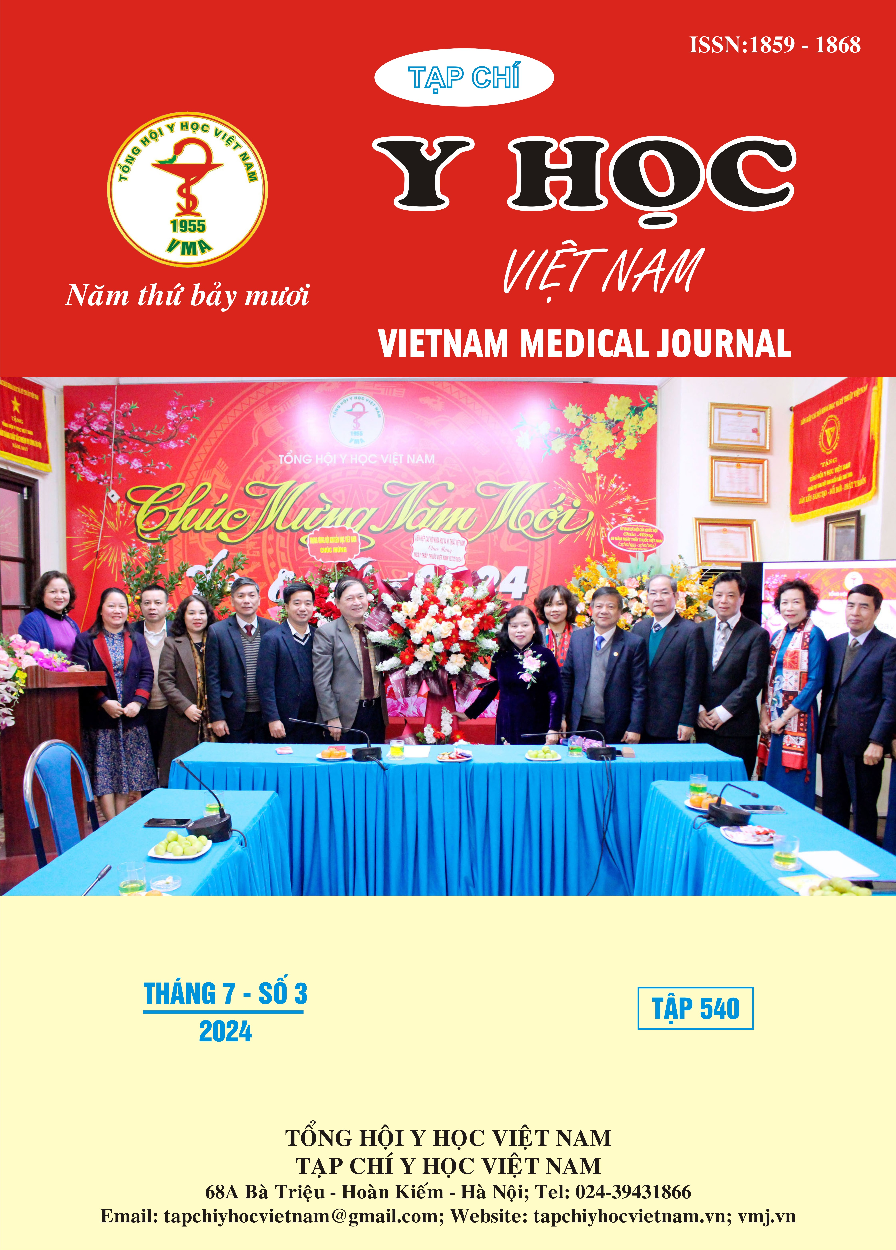CLINICAL AND SUBCLINICAL CHARACTERISTICS IN RECURRENT ANAL FISTULATION PATIENTS AT CAN THO CENTRAL GENERAL HOSPITAL
Main Article Content
Abstract
Background: Anal fistula is a common disease in the anal-rectal area, ranking second after hemorrhoids with nearly 24.5% of diseases in this area. Understanding this disease with information such as epidemiological characteristics, clinical and paraclinical features, and diagnosis plays a very important role in treating this disease. Objective: Describe the clinical and paraclinical characteristics of patients with recurrent anal fistula at Can Tho Central General Hospital. Research method: Retrospectively describes over 80 patients who have been operated on at least once and are still not cured (including patients with previous surgeries at the lower level, and patients with abscess incisions) but have been diagnosed with a definite abscess, anal fistula. Results: Average age: 42.9 ± 14.86 (17 - 79), 31 - 50 years old accounted for 51.3%. Male/female ratio ≈ 6.3/1. The reason for admission to the hospital was anal discharge accounting for the majority with 66.3%. There are 75% of patients with 1 external opening, 66.7% of external openings are located in the back half, the distance from the external opening to the anal edge is from 2 to 4 cm, accounting for 76.4%. 86.1% found an internal hole, 77.8% had 1 internal hole, 76.8% were consistent with Goodsall's law. 15% (12 patients) had an MRI scan of the fistula with the results of all 12 patients having the internal hole and fistula location described on the MRI results. Regarding ultrasound, 45% of patients have combined lesions (abscess + fistula). According to fistula classification, 72.4% sphincter oblique fistula, 21.3% simple abscess, 6.3% complex fistula. Conclusion: It is necessary to identify the clinical and paraclinical characteristics of anal fistula disease and accurately classify the fistula with the right treatment to help prevent patients from having to undergo repeated surgery without referring the patient to the hospital. specialist line.
Article Details
Keywords
Anal fistula, recurrent, clinical, subclinical
References
2. Đỗ Đình Công (2007), “Kết quả sớm điều trị phẫu thuật bệnh rò hậu môn”, Y học thực hành, 11, tr. 173-175.
3. Tăng Huy Cường (2011), Nghiên cứu đặc điểm lâm sàng, cận lâm sàng và kết quả điều trị phẫu thuật lại rò hậu môn tại Bệnh viện Việt Đức, Luận văn Thạc sĩ Y học, Trường Đại học Y Hà Nội, Hà Nội.
4. Manothay Toulabouth, Nguyễn Đoàn Văn Phú (2019), “Đánh giá kết quả điều trị rò hậu môn tái phát”, Tạp chí Y Dược học - Trường Đại học Y Dược Huế - Tập 9, số 2 - tháng 4/2019, tr. 45 - 48.
5. Trịnh Hồng Sơn (2011), “Phẫu thuật điều trị rò hậu môn tại bệnh viện đa khoa tỉnh Hòa Bình”, Y học thực hành, 7, tr. 43-201.
6. Nguyễn Xuân Hùng (2008), “Đánh giá kết quả điều trị rò hậu môn tại bệnh viện Việt Đức trong giai đoạn 2003 – 2006”, Tạp chí Y học Việt Nam, tr. 45 - 52.
7. Võ Tấn Đức (2003), “Giá trị của siêu âm lòng hậu môn trong bệnh rò hậu môn”, Hội nghị chuyên đề bệnh hậu môn - đại trực tràng, tr. 98 - 107.
8. Lê Thị Diễm (2010), “Bước đầu khảo sát giá trị hình ảnh cộng hưởng từ của rò hậu môn. Y Học TP Hồ Chí Minh, Tập 14, Phụ Bản Số 1.
9. Buchanan GN, Halligan S, et al (2004), Clinical examination, endosonograpphy, and MR imaging in preoperative assessment of fistula in ano, Radiology 233 (3), 674 - 681.


